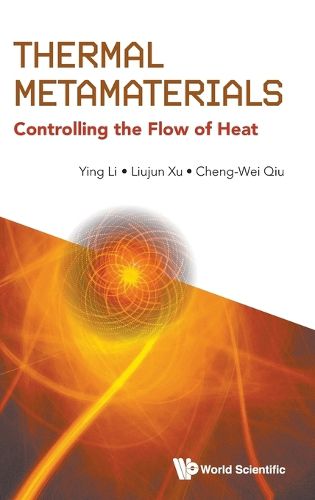Readings Newsletter
Become a Readings Member to make your shopping experience even easier.
Sign in or sign up for free!
You’re not far away from qualifying for FREE standard shipping within Australia
You’ve qualified for FREE standard shipping within Australia
The cart is loading…






This book gives a comprehensive review on thermal metamaterials, an emerging type of artificial structures designed for the control of heat transfer. To date, many exciting findings have been made in this field, including some novel understandings about the heat transfer processes (reciprocity, symmetry, topological properties, etc.), as well as promising new possibilities to control heat (cloaking, rectification, collection, etc.). The text is organized into three segments: steady-state, time-harmonic, and transient heat transfer. In Part I, the transformation theory and effective medium method are introduced with their applications on the manipulation of steady-state heat transfer, covering early studies in this field. In Part II, the recently developed thermal scattering theory and temporal modulation method are discussed in the context of controlling time-harmonic heat transfer. In Part III, the effective Hamiltonian method is presented to study the decaying thermal modes in transient heat transfer. We include detailed derivations and examples for each theory or method. The book ends with an outlook chapter on open problems and potential possibilities in this promising field.
$9.00 standard shipping within Australia
FREE standard shipping within Australia for orders over $100.00
Express & International shipping calculated at checkout
This book gives a comprehensive review on thermal metamaterials, an emerging type of artificial structures designed for the control of heat transfer. To date, many exciting findings have been made in this field, including some novel understandings about the heat transfer processes (reciprocity, symmetry, topological properties, etc.), as well as promising new possibilities to control heat (cloaking, rectification, collection, etc.). The text is organized into three segments: steady-state, time-harmonic, and transient heat transfer. In Part I, the transformation theory and effective medium method are introduced with their applications on the manipulation of steady-state heat transfer, covering early studies in this field. In Part II, the recently developed thermal scattering theory and temporal modulation method are discussed in the context of controlling time-harmonic heat transfer. In Part III, the effective Hamiltonian method is presented to study the decaying thermal modes in transient heat transfer. We include detailed derivations and examples for each theory or method. The book ends with an outlook chapter on open problems and potential possibilities in this promising field.